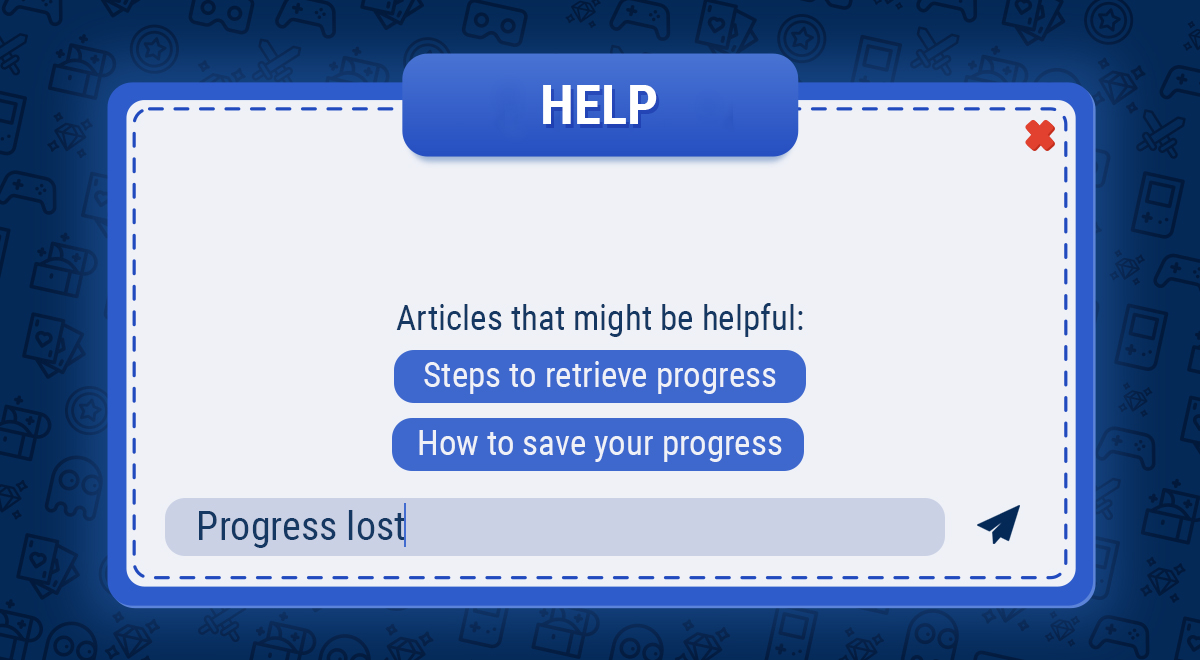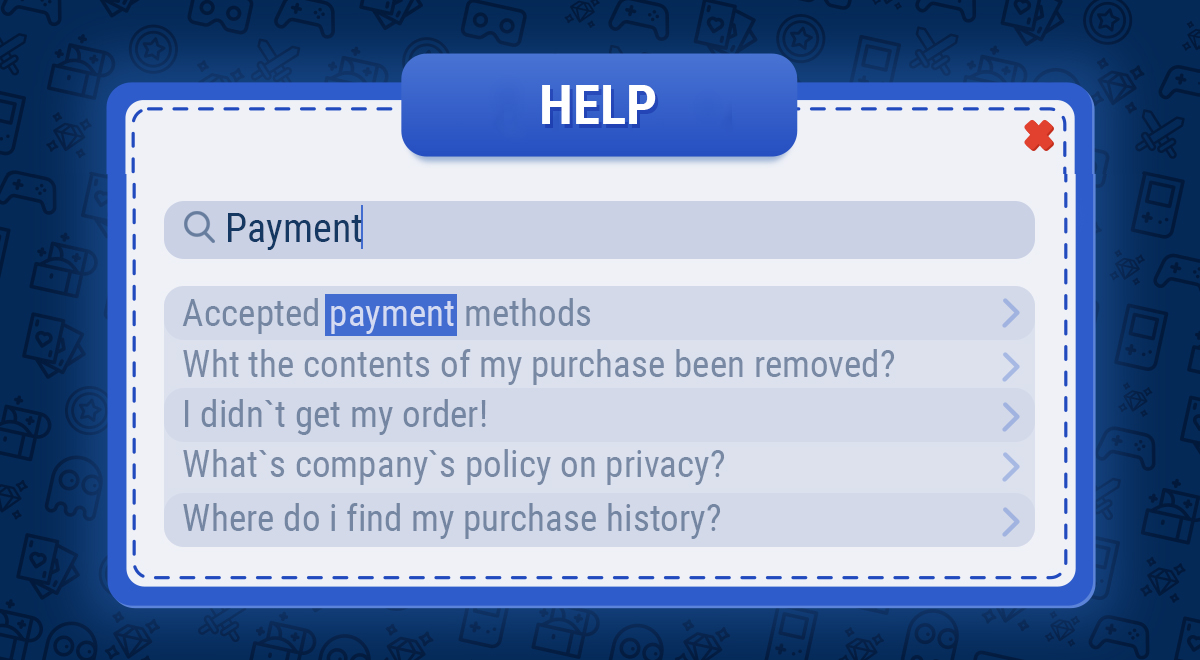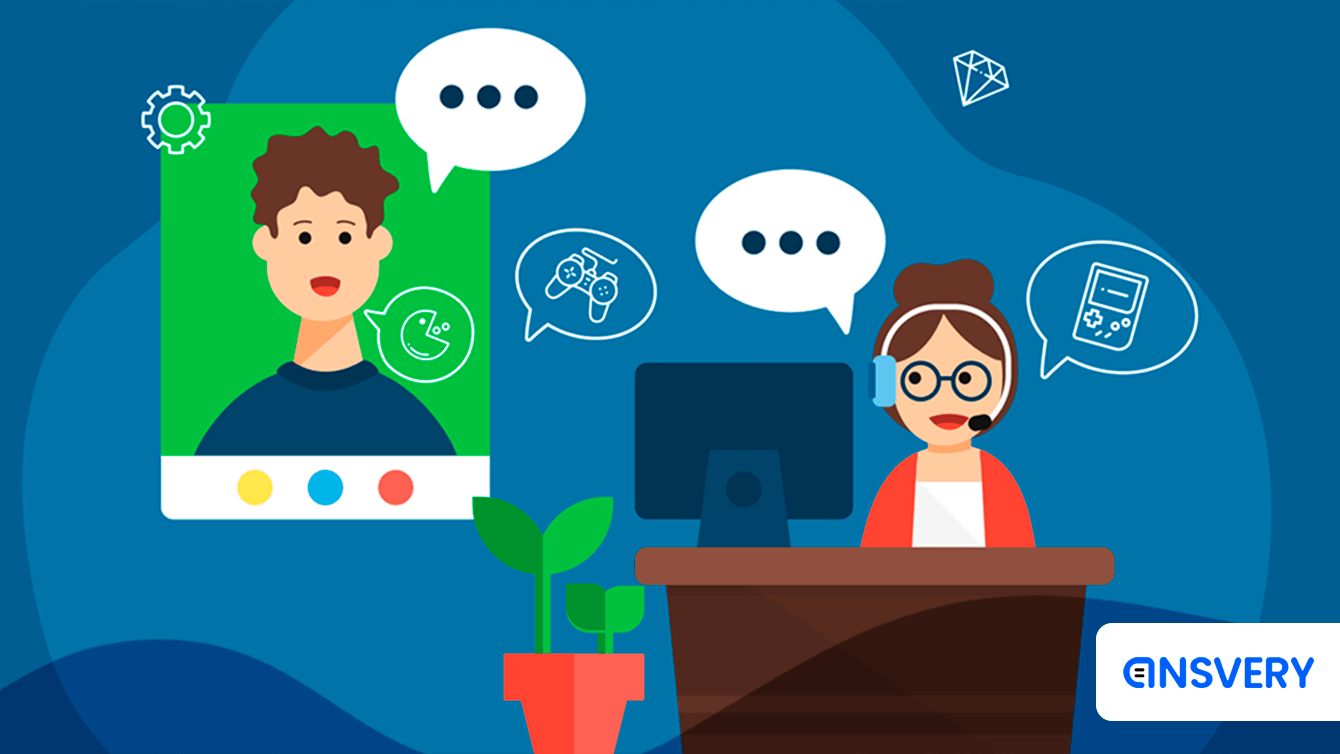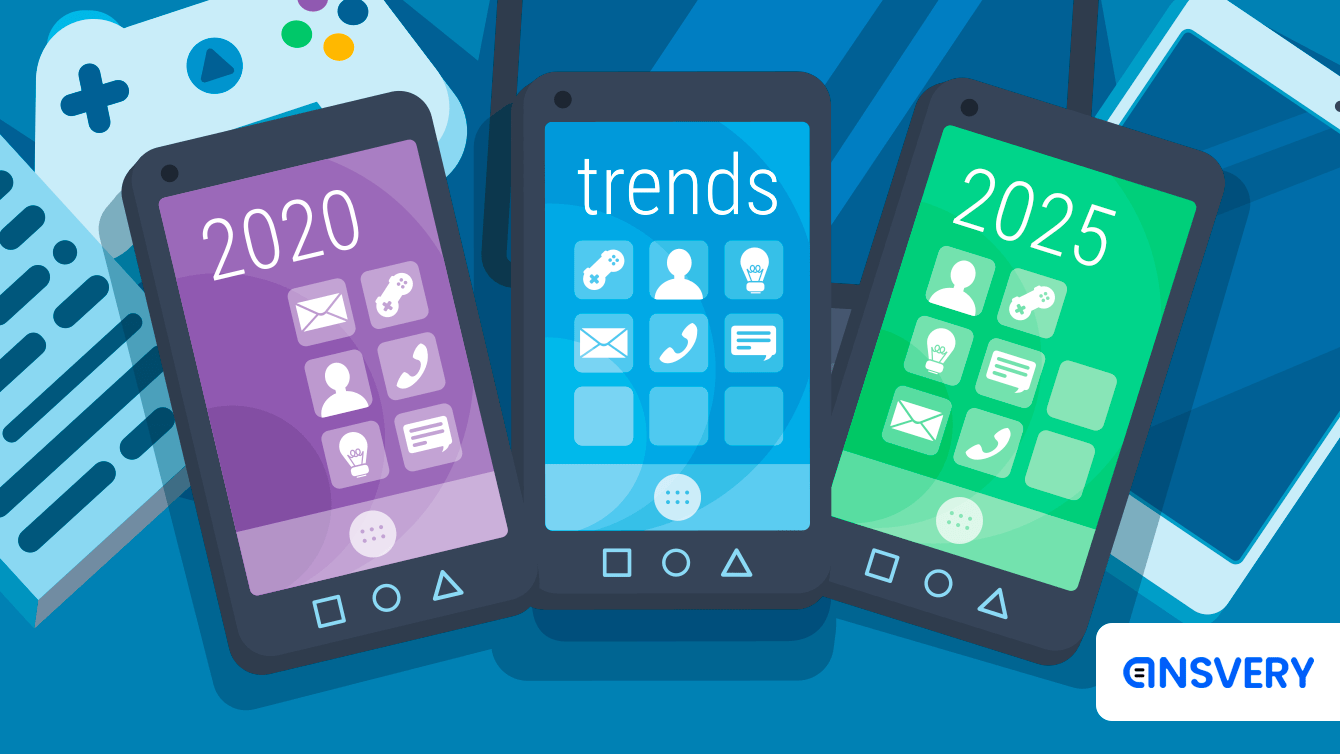How to Work with Target Audience through Support
Welcome to the second article in this series written by Ekaterina Rogacheva, the head of community and support at Azur Games, in collaboration with the Ansvery.
Support is your first line of communication with users. It allows you to interact with both new players and engaged users, which makes it a very effective tool for approaching your target audience.
A lot of developers assume that the only function of support is reactivity and that support implies just dealing with negativity and the issues users have faced. But there’s a lot more to it than that. By using a proactive approach, your support service can prevent many adverse scenarios. In this article we’re going to discuss both approaches and look into why each of them is important for successfully interacting with your audience.
The Reactive Approach
Support usually operates reactively, dealing with specific problems your players have come across.
Direct
- Messages/calls
Indirect
-
Social network inboxes
-
Social network comments
-
Store reviews
For any request (direct or indirect), whether it be a support ticket or a social media comment, your goal is to provide help as quickly and effectively as possible. By the way, a lot of companies take direct support messages and social network inboxes very seriously, but still don’t work with comments on social networks. This is a mistake – after all, your private message response will only be seen by one person, while your response to a comment will be seen by many people at once. The same goes for working with reviews in stores – by replying to them, you’re able to reach more people right away. Don’t forget that an open conversation and the ability to enter into dialog with the developer can have a positive impact on the loyalty of your players.
Support for new players and paying customers
Retention of these categories of users is a crucial aspect for any project, and, ideally, their requests should be filtered out from the others and given a higher priority.
New players aren’t quite involved yet, so they might have a higher risk of leaving the game if they run into any unclear aspects or technical issues.
Paying customers are usually more assertive in demanding quality support and quick responses.
You should provide these players with all the help they need in a timely manner and make it as comprehensive and easy to understand as possible. After we started sorting out these requests in Robot Warfare, we managed to cut our response time in half. We’ll get into more detail about support for paying customers in one of the upcoming articles in the series.
Vasili Sabirov (ex-devtodev) agrees that the loyalty of both new and experienced players is important. In a business model where the average percentage of paying customers of F2P games is about 1-2%, loyalty is key. The bulk of a game’s revenue comes from whales, so leaving a whale feeling bad about your game makes it very likely that you will miss out on another payment, cut off a series of payments, and suffer a negative viral effect (whales are often influencers). On the other hand, every new player also needs to get their own portion of attention, since any of them could turn into a whale. Experience dictates that if a player contacts support, even if they haven’t paid yet, they’re already more motivated than other players.
In-game polls
As an example, let’s consider a feature such as “rate us” – a window that offers the player a chance to rate the game within the client. If a player gives your game a high rating, they are offered a chance to go to the store and rate the game there. If the rating is high, things are pretty straightforward, but what should you do if the rating is low? You don’t want to send the player to the store – if you do, you’ll just end up with a negative review. Inaction isn’t the way to go either. A good option would be to add a feedback form accompanied with the text “How can we make our game better?” You could even go further and, instead of a simple feedback form, add a poll where the player can pick the aspect of the game that negatively affected their overall opinion. This could include options such as “balance,” “connection,” “graphics,” etc.
This way the user will have the ability to share their criticism with you rather than bringing it to the store, and you’ll get one more source of feedback. If you have a poll, you’ll get more out of the interaction and be able to collect more detailed statistics. These options can act both as a reactive measure and as a proactive one, which takes us to the second part of this article.
The Proactive Approach
So, which proactive functions can support use?
-
In-game knowledge base
-
In-game polls (just as with “rate us,” this feature can be both reactive and proactive)
-
force majeur notifications
In-game knowledge base
There is a very useful tool called an “in-game knowledge base” or “in-game FAQ.” A knowledge base is a place where you can put all potentially useful information for players, from the most common issues and ways to solve them to guides for new players and descriptions of complex game mechanics.

The easiest to integrate a knowledge base is to place separate blocks of information in the game’s UI. Add buttons that open an info window next to certain interface elements and put all the useful information about this specific element in the window. This will help players find answers to their questions. However, if there’s no option to create a request in the window, the form will be less effective than the next option.
The best option is to integrate a knowledge base that includes an in-game support chat. Visually it looks like a window with a list of articles and a “submit request” button at the top or bottom. The player can look for the answer to their question in the articles, and if they can’t find it, they can contact support without leaving the interface.
This way you can manage the ability to initiate a request for different groups of users. For example, if your support resources are limited, you can hide the “submit request” button at the end of the list for most players, but keep it easily accessible only for prioritized categories of users such as new players and paying customers.
Here’s some advice on how to make the form even more effective:
-
Some users prefer to go straight to creating a new support request, bypassing articles in which they could possibly find an answer to their question. For these cases, add context-based article suggestion – as the player enters their request, the system automatically suggests articles containing relevant content.

-
For a player who is dealing with an issue, the need to scroll through the full list of articles can become a demotivating factor. To avoid this situation and make the user’s experience with your knowledge base smoother, add the option to search by keywords

-
Dedicate an article to a list of issues with the current game version and ways to solve them. Make this article the first or one of the first in your FAQ. This way users will immediately have access to the most relevant information.
A great example of knowledge base integration is the Zendesk app – they’ve implemented their knowledge base in a very convenient way, with a list of articles accompanied by a feedback button.

According to data from services that provide the in-game FAQ ready-to-use tools, adding a knowledge base can reduce request volume by up to 50%. According to my personal experience, I can say that this is actually an excellent tool if you need to reduce the load on your support team without reducing the quality of service.
Anna Bashkirova, product owner of the Ansvery, adds that both the quantity and quality of questions changes. In Ansvery's experience, a solid FAQ reduces a large volume of standard questions, leaving support to deal with more complicated cases that require an in-depth knowledge of even the slightest gameplay nuances. Keep in mind that this might increase the time it takes to train a new specialist.
In-game polls
Polls within the game can perform a reactive function by letting you react to an issue that has already been addressed, as well as a proactive one by keeping the player from doing something that negatively impacts your game, such as leaving a bad review in a store.
Force majeure situations
Be sure to inform your players about force majeure situations such as server problems or any other critical issues or bugs. It’s best to add some sort of a notification to the game’s main menu. For example, you could put a red blinking exclamation point at the top of the screen that, when the player clicks on it, displays a message with a short description of the issue and the approximate time it will take to fix it. This feature significantly reduces request volume in force majeure situations and reassures players that the issue is being dealt with in a timely way. Anna Bashkirova adds that some HelpDesk systems support mass push notifications to help warn players about bugs and upcoming scheduled maintenance.
In conclusion, I'd like to point out that if you spend enough time on the reactive part of support and don’t neglect the proactive features, the quality of your players’ user experience will increase significantly, and request volume will be reduced.
In the next article in this series we’ll go into detail about the key elements of support as a part of the user experience and find out what you should concentrate on in order to provide your users with the best support possible.




